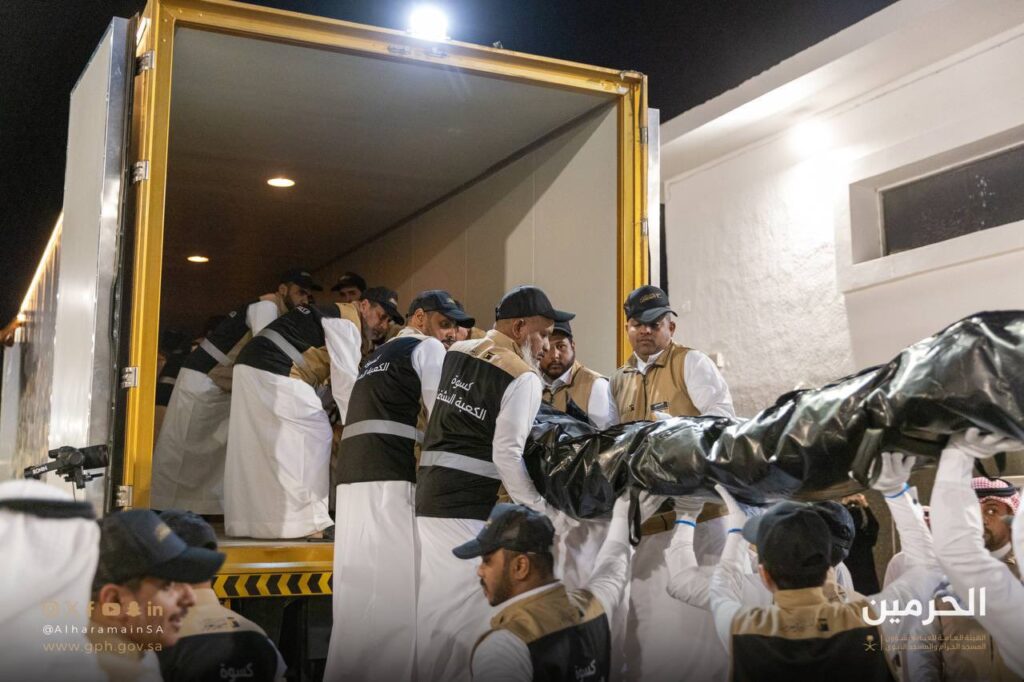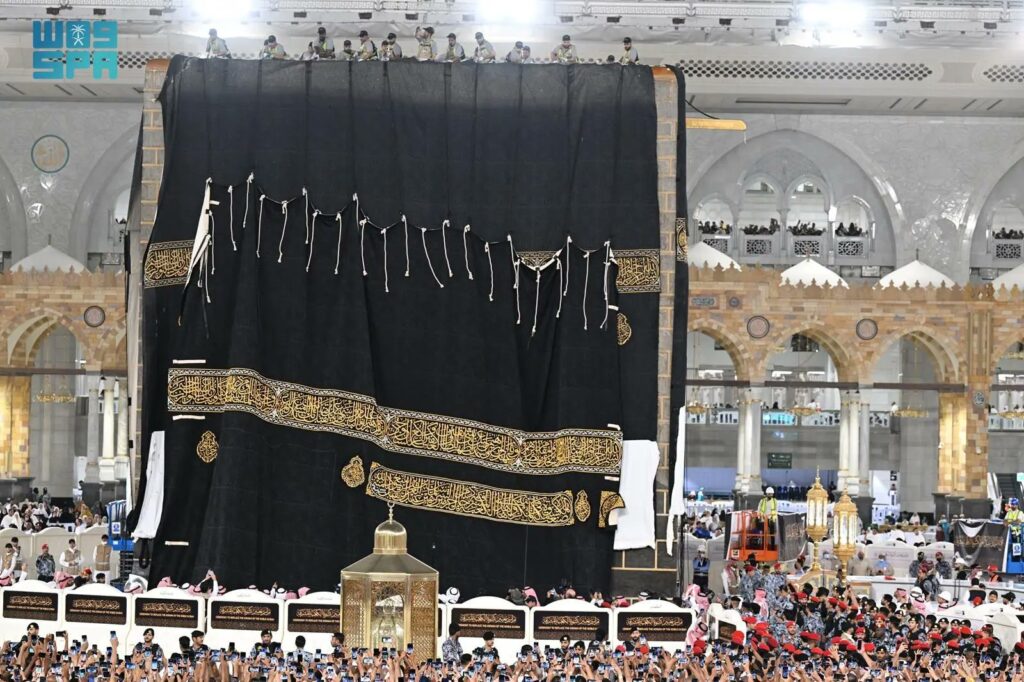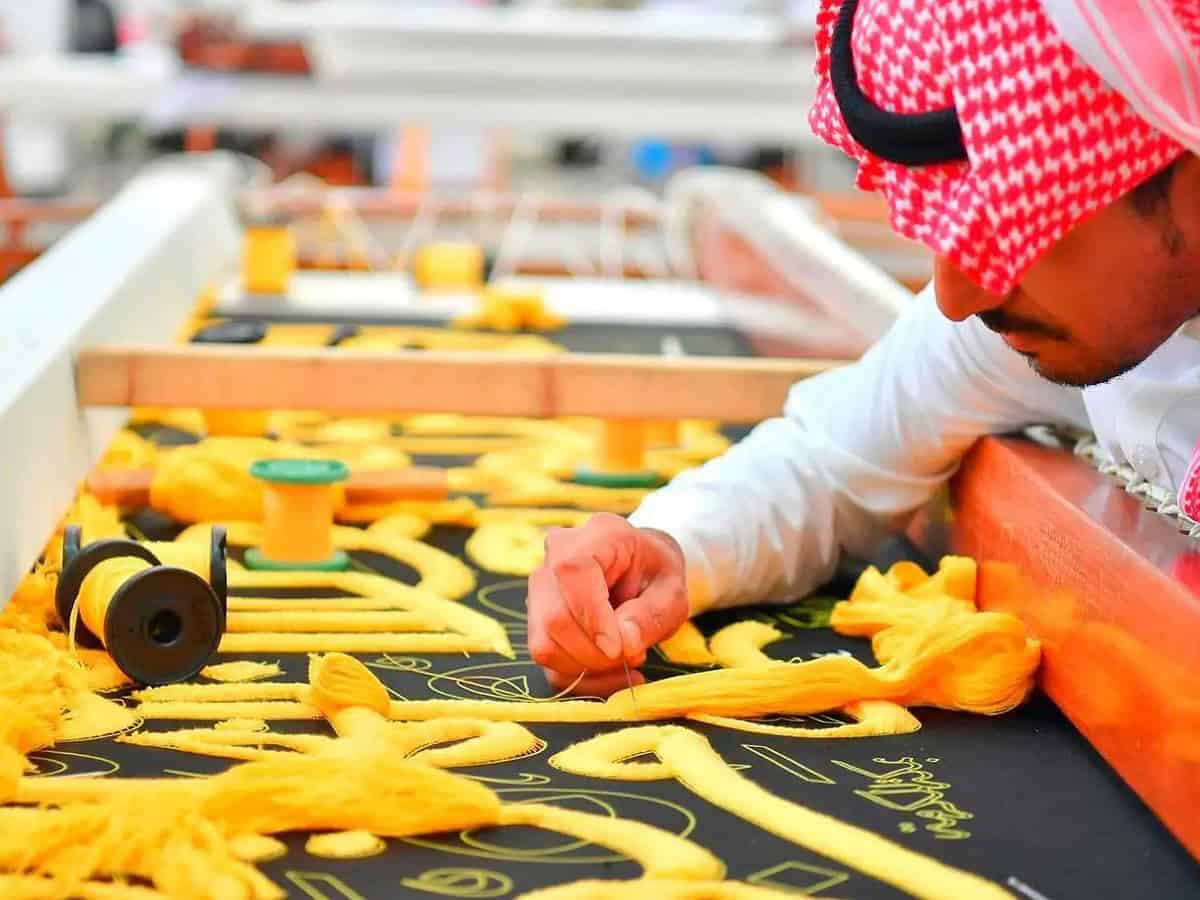
With exceptional skills and deft hands, a group of youth in Makkah, Saudi Arabia, masterfully weaves the Kiswah of the holy Kaaba (Ghilaf-e-Kaaba) using threads of silk, silver, and gold. They work through several stages to craft the Kiswah of the holy Kaaba.
On Sunday morning, July 7, 159 craftsmen changed the Kiswah of the holy Kaaba, following the annual tradition observed every Hijri year.
This ritual includes removing the old Kiswah from the holy Kaaba and replacing it with a new one, consisting of four distinct sides and the door curtain.
Where is the Kiswah made?
The Kiswah Al Kaaba factory in Makkah has been producing Kiswah for nearly 45 years. The Saudi Arabian government-owned factory, established in 1977, employs 200 workers, with 114 focusing solely on embroidery, completing the cover production in six to eight months.

Stages of producing the Kiswah of Kaaba
- The Kiswah’s manufacturing process begins with the “sweetening” of water according to specific standards for silk washing and dyeing, the Saudi Press Agency (SPA) reported.
- In “dyeing” stage, where the protective wax layer is removed and the silk is dyed black for the outer covering and green for the inner covering and the Prophet’s Chamber.
- The “laboratory stage” involves testing random samples before and after dyeing to ensure that silk and silver threads, and silver threads coated with gold, meet approved standards.
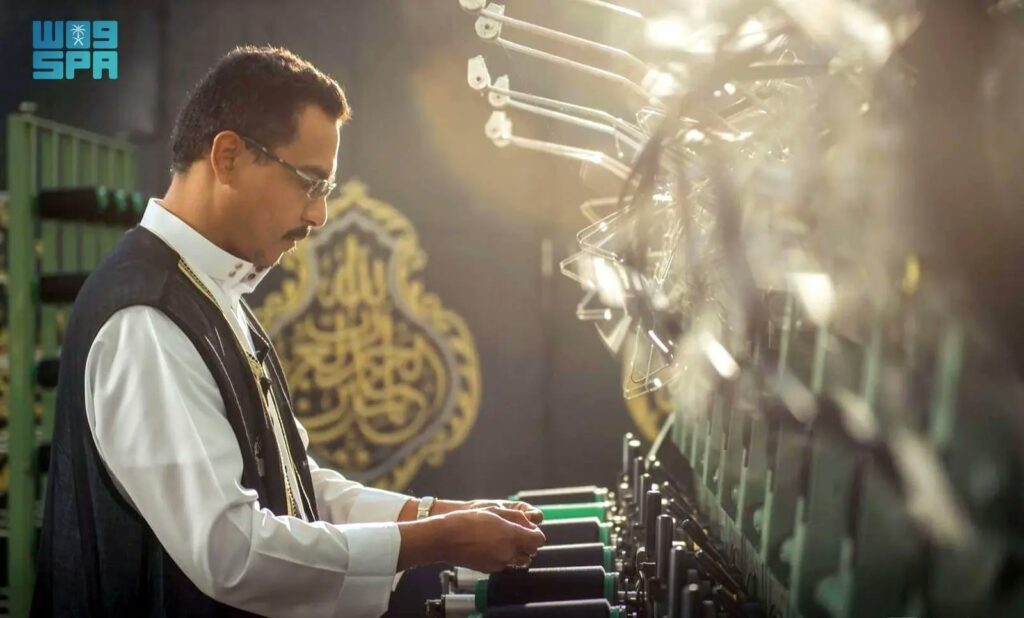
- In the fourth stage of Kiswah manufacturing, automated weaving converts silk threads into spools, used in jacquard silk weaving machines to create Kaaba outer cover and plain silk fabric for Quranic verse printing and embroidering.
- The fifth phase involves affixing plain silk fabric to woven fabric, printing Quranic verses using silk screen printing on the holy Kaaba belt and surrounding area.
- In the sixth manual stage, cotton threads are used to stuff Quranic verses and Islamic decorations with silver and gold-coated silver wires.
- The seventh stage, known as the “belt” stage, involves embroidered Quranic verses and Islamic decorations using silver wires coated with gold and secured onto silk fabric using cotton threads.
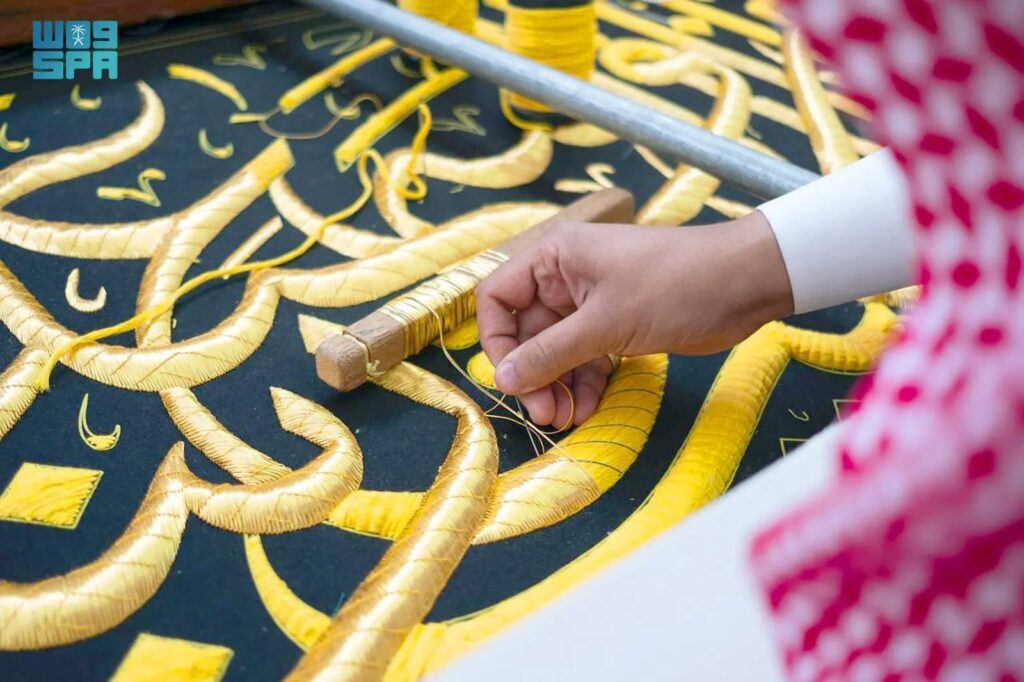
- The eighth stage of production focuses on quality control, ensuring adherence to established standards for all inputs and outputs throughout the production stages.
- In the ninth stage, the Kiswah is assembled by gathering the pieces that cover the holy Kaaba, including curtain pieces and adorned sections from the Kaaba’s belt downwards.

- Finally, the holy Kaaba is dressed, with the old Kiswah replaced annually on the first day of Muharram.
